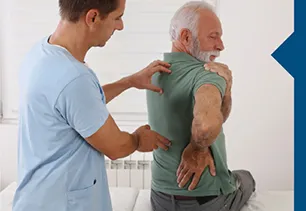Breathing issues are more common than you may realize. While some are caused by usual suspects such as allergies and exercise, others have more unexpected culprits such as medications or certain diseases.
For example, the common cold, flu, and COVID-19 are known to cause shortness of breath. Once you start listing all the heart and lung issues that can cause breathing problems, you start to see the extensive list of what could be the source of your breathlessness.
Even though breathing issues are quite common, it’s also common for doctors to overlook them or at least not supply you with the information you need to better understand your condition.
Here are five things your doctor may not be telling you about your breathing issues:
1. Shortness of breath can be due to medication side effects
Sometimes people can feel short of breath due to medications they are taking to help with other conditions they’re experiencing. For example, Brilinta, a blood thinner, can cause shortness of breath. Other medications that may cause breathing issues include ACE inhibitors, NSAIDs, anticonvulsants, beta blockers, calcium channel blockers, antibiotics, digoxin, and chemotherapy agents.
If you are experiencing shortness of breath and are taking one of these medications, you can ask your doctor to review what you are taking and perform a reevaluation of your current regime. Your doctor may be able to prescribe different medications that won’t cause you any breathing trouble.
Sometimes your medications can’t be changed, so it’s also a good idea to be aware of support services that can help you manage your breathlessness, such as respiratory therapy or pulmonary rehabilitation.
2. Shortness of breath is a common symptom of heart or lung issues
Shortness of breath is a symptom of many diseases, including those that cause heart or lung issues. Congestive heart failure, COPD, pulmonary fibrosis, and heart disease are all pathologies that lead to patients experiencing decreased activity tolerance. This decreased activity tolerance can lead to fatigue and breathlessness.
If you have a heart or lung diagnosis, it’s important to learn everything you can about how to manage your symptoms and the disease process. Proper medications, medical attention, and regular exercise–such as in a pulmonary or cardiac rehabilitation program–can help you become more independent. Physical therapy can also help with breathlessness, weaknesses, and generalized fatigue or deconditioning.
3. Shortness of breath can be a medical emergency
There are certain instances where a sudden onset of shortness of breath can be a medical emergency. Being aware of the signs of heart attack, stroke, and pulmonary embolism (blood clot in the lungs) is important knowledge to ensure your breathing difficulty isn’t something that needs immediate medical attention.
Signs of a heart attack include shortness of breath, nausea, or an impending sense of doom as well as chest, arm, jaw, or back pain. Stroke symptoms include facial drooping, weakness on one side of the body, confusion, or slurred speech. Pulmonary embolism, or a blood clot in the lung, can be identified by a significant and sudden shortness of breath, dizziness, low oxygen levels, dry cough, or fast breathing.
If you are experiencing any of these symptoms, you should call 911 and get to the closest hospital as soon as possible.
4. Shortness of breath isn’t just because of an oxygen issue
Most times, people think that if they are short of breath, they have an oxygen issue. This isn’t always the case. Shortness of breath is multi-faceted and there are several processes in the lungs, heart, and muscles that can all lead to shortness of breath.
Our lungs perform three functions: respiration, ventilation and perfusion. Respiration is the ability of the air to get from the atmosphere into our lungs through our nose and mouths. Ventilation is the ability of the lungs to expand and contract as we breathe. Lastly, perfusion is the ability of the oxygen to leave the lung tissue and transition into our blood stream.
If something is wrong with any one of these processes, it can leave you feeling short of breath. Additionally, we need to be mindful that the heart is the pump that helps the oxygen to travel through the body, so heart issues can also lead to shortness of breath even though oxygen levels are normal.
Finally, our muscles have to be able to accept the oxygen that is flowing around the blood stream, and weaknesses can cause the muscles to become less efficient, resulting in breathlessness. So, you can see how shortness of breath isn’t always because of low oxygen levels in your body.
5. Shortness of breath can be improved
If you have shortness of breath, all hope is not lost. There are plenty of things that can be done to improve this symptom.
Certain medications, such as inhalers or supplements, can help with keeping your airways open. Heart medications can ensure your heart pumps efficiently. Regular doctor visits to manage your symptoms and testing to find the source of your breathlessness are key to proper medical management.
Additionally, finding a good physical therapist to partake in physical therapy, pulmonary rehabilitation or cardiac rehabilitation is an important piece of improving your quality of life through improving your activity levels in a safe, monitored environment.
Hopefully this article helped to solve some of the questions you have about your breathlessness. Remember, Lifeline Therapy is a full-service company specializing in assisting patients with shortness of breath to help improve strength, endurance, and function.

